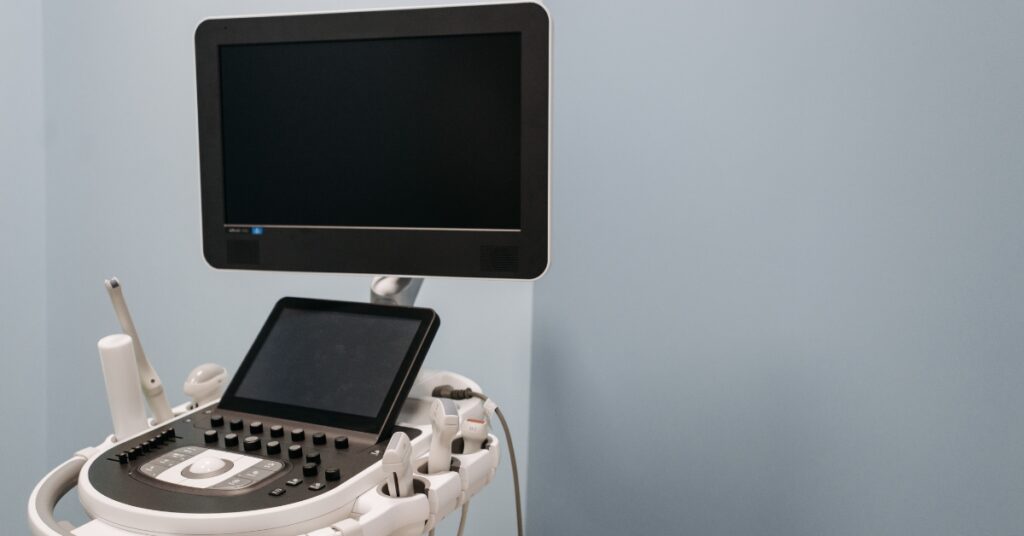Fertility treatments can sometimes seem like an endless stream of procedures, especially if you’ve already tried multiple treatments before IVF. Many patients are concerned about everything from cost and success rates to possible discomfort, so when your doctor recommends doing a saline sonogram prior to IVF, you may wonder if it’s really necessary. Let’s understand why your doctor may recommend a saline sonogram at Halo Fertility.
What Is a Saline Sonogram?
The main difference between a basic ultrasound and saline sonogram (aka saline infusion sonohysterography) is that during this outpatient procedure your uterus is filled with sterile saline solution. Saline helps your uterus expand, allowing your doctor to see the details of your uterus more clearly than with a regular transvaginal ultrasound
Why Getting a Saline Sonogram Before IVF Is Helpful
While a basic ultrasound can identify uterine fibroids, ovarian cysts and normal ovarian follicles, doctors often order a saline sonogram to look for problems like hidden polyps and fibroids, and whether your fallopian tubes are blocked. Your doctor will also be able to determine your antral follicle count, which gives an estimate of how many eggs are likely to be retrieved.
A saline sonogram also helps your doctor see whether your uterus is shaped normally and whether there are any issues with the uterine lining. This is especially important because your uterine lining needs to be thick enough to support an embryo.
What to Expect From a Saline Sonogram
Saline sonograms are typically well-tolerated, but your doctor may suggest taking an over-the-counter pain reliever before your procedure to minimize any discomfort.
Before the procedure, you’ll be asked to empty your bladder and remove your clothing from the waist down. Your clinician may begin with a standard ultrasound, inserting a wand-like transducer into your vagina to capture images, before inserting a speculum and swabbing your cervix in preparation for the catheter.
The catheter is very thin, minimizing discomfort, though you may experience some cramping during this part of the procedure. The sterile saline solution enters your uterus through the catheter, and you may, too, feel some cramping while the fluid is filling your uterus.
Once your uterus is full of saline, your doctor will be able to see clear images of its interior. Once the speculum and catheter are removed, your procedure is complete and you’ll be able to get dressed and go home.
You may want to wear an absorbent pad afterwards because the saline solution will drain out of your uterus on its own over several hours. You may also experience some spotting, cramping, and fluid leakage for a few days after the procedure.
Are There any Risks Associated with a Saline Sonogram?
There aren’t many risks from saline sonograms, which is why it’s become common for doctors to order one before IVF. You should not have a saline sonogram if you’re pregnant, so your doctor may have you take a pregnancy test prior to the procedure.
There is a small risk of infection after a saline sonogram, which usually isn’t a problem because the solution is sterile and steps are taken to minimize the risk of infection. However, if an infection occurs, it can be treated with antibiotics.
While the risk of complications is small, notify your doctor if you experience severe pain, abnormal vaginal discharge, or a fever in the days after your procedure.
Next Steps After Your Saline Sonogram
A follow-up appointment will be scheduled to discuss the results with your doctor. Depending on the results, you may need further testing or treatment of any problems that are found before you begin IVF.
If any issues need to be addressed, your doctor will include them as part of your treatment plan. If everything looks great, your doctor will talk to you about a recommended timeline and next steps to begin IVF.
The Takeaway
Saline sonograms are common, safe procedures that provide valuable information that helps determine your best treatment plan for successful IVF.
If fibroids, scarring, polyps, or blocked fallopian tubes are found during the exam, your doctor will likely recommend treating them (depending on severity) before beginning IVF. Once these problems have been treated, you have a better chance of successful implantation.
If you have questions or concerns about your procedure, don’t be afraid to ask. The Halo fertility team is here to help, and we want you to feel comfortable with your treatment plan.
Learn more here about questions you may want to ask your doctor before beginning IVF.







